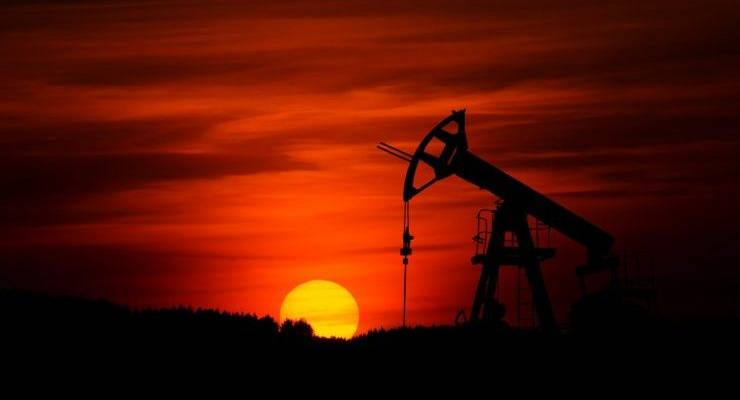
The Zambezi River arises in the North Western Province of Zambia and flows in a loose, curling “S” shape for more than 2500km through eastern Angola, along the north-eastern border of Namibia and the northern border of Botswana, then along the border between Zambia and Zimbabwe.
A few hundred kilometres before it swoops south through Mozambique to its delta at the Indian Ocean is the Lower Zambezi National Park. The park has a huge density of elephants, a modest number of high-end tourist places, and no paved roads. And, for over decade, it has been the centre of an ongoing and bizarre fight for the resources apparently beneath it.
In early November, Zambia’s Tourism Minister Ronald Chitotela suddenly withdrew permission for a company called Mwembeshi Resources to mine in the park, saying it will remain closed to mining until the country’s environmental regulator completes a fresh report on the potential impacts of extractive activities in the area as the last study expired in 2017. It’s the last in a series of twists and turns regarding the mine.
Australian company Zambezi Resources Limited (ZRL) had been interested in potential copper and gold reserves in the park since the early 2000s, and despite all 17 chieftains in the area signing an agreement to oppose mining in the area, made an application to open the Kangaluwi Copper Mine in 2010.
The application was done through ZRL’s Bermuda-based subsidiary, Mwembeshi Resources. Companies have to provide a environmental impact statement (EIS) with any large-scale mining application.
Every review of Zambezi Resource’s EIS has been utterly scathing. An independent report by US mining engineer Jim Kuipers concluded: “The Kangaluwi Copper Mine grossly fails to meet US or international standards for environmental assessments. It is our strongest recommendation that this EIS be rejected by the government of Zambia.”
In late 2012, the Zambia Environmental Management Agency refused the ZRL application. The company appealed to then-minister of lands, natural resources and environmental protection Harry Kalaba.
Eighteen months later, on January 17, 2014, he intervened to allow it. ZRL issued a statement on the ASX promising the “cleanest, greenest and safest copper mine ever built”.
The next month, then-Western Australia premier Colin Barnett met with then-vice president of Zambia Guy Scott in Lusaka, while protests against ZRL raged on the streets outside his hotel. Local press reported representatives from ZRL — who happened to be at the same hotel on the same day — were also at the meeting, but Barnett’s office said they weren’t.
After the shock approval, local NGOs quickly launched a court application to prevent the mine from going ahead — duly, the high court put in place a “stay of execution“.
In November, another report, this one commissioned by the Lower Zambezi Tourism Association — roughly 1000 locals are employed in tourism roles in the park — concluded the mine was not only environmentally troubling, but highly unlikely to be economically viable.
For the next five years — during which both government and Zambezi Resources appeared to back off, the stay remained in place.
In the meantime, the value of Kangaluwi Copper Mine was “impaired to nil” — essentially, written down to nothing. Over the same period, Zambia had a change of president, an economic downturn and an alleged explosion of corruption.
Among those accused was Chitotela, who was arrested and eventually acquitted on for allegedly hiding properties that were believed to be the proceeds of crime.
In April this year, Zambezi Resources, now called Trek Metals, sold Mwembeshi for $1.1 million to a mysterious Dubai-based company called Grand Resources Ltd.
In June, a fresh affidavit was lodged in Lusaka’s High Court by Mwembeshi and the Zambian attorney-general.
In October, the High Court overturned the appeal on a technicality, clearing the way for mining to go ahead. Now, it appears the government has reneged on that — although activists in the area are sceptical, and note the wriggle room in Chitotela’s statements and the lack of a formal government announcement.
As South Africa-based journalist Sharon Gilbert-Rivett puts it, there is one big question in all this: why?
“Why is there such a seemingly inexhaustible drive to push this mining project forward..? Mining experts have questioned its economic viability; conservationists, tourism operators, renowned scientists and the world’s most recognised environmental agencies have variously decried it and the Zambian people have taken to the streets in protest over it.”
Activists believe the court decision overturning the appeal reflects the growing influence of Chinese resource companies in Zambian internal affairs. There is a Grand Resources Ltd in China, but it’s not clear if this is the same one that took over the Kangaluwi Project.
By this stage, though, Trek Metals was long gone, surveying for zinc-lead orebodies in Gabon.
Trek Metals was approached for comment.








Growing influence of Chinese resource companies!! What can you say – the poms did it big time probably still do to some extent – The Americans have always done it at least in recent times – The Russians at least would like to do it. Everyone would like to do it but in every way imaginable IT IS, WAS and ALWAYS WILL BE WRONG .
As it has all around the globe including the south pacific, China has infiltrated mining and infrastructure enterprises throughout subSaharan Africa. Chinese foremen are frequently visible supervising roadworks carried out by mixed Chinese and local workers (local anecdotal evidence has it that the Chinese labourers are criminals serving out their sentences in this way). Only this year I witnesses such a gang in Fiji. Of course Dina doesn’t provide its expertise gratis: it comes in the form of a loan to the likely corrupt government of the country, with who knows what backhanders ending up in cabinet ministers’ or presidential personal bank accounts. This year, we saw the Kenyan government fail to meet their loan repayments to China for the building of a state-of-the-art railway line between Nairobi and Mombasa (a very pleasant trip for tourists which winds through a national game reserve), triggering a clause entitling China to effectively claim ownership of the port of Mombassa, which services not only Kenya but also Uganda. The two countries had only just reached an agreement to extend the railway into Uganda, providing easier Ugandan export access to the port, which services the whole east African region. So now China controls the flow of east African exports, as well as now possessing its own export/import facility, via which it will now flood the region with its own automotive and other products. World domination by economic invasion. Did you know that also, incidentally, the US has a 99-year lease on Lake Victoria, the source of the Nile, which supplies water to countries all the way north to Egypt? Water politics. Now there’s a-whole-nother story.
The saddest thing is, it doesn’t matter what colonial power is making the mess, it will be the general people who will suffer and be left to clean up and count the cost.